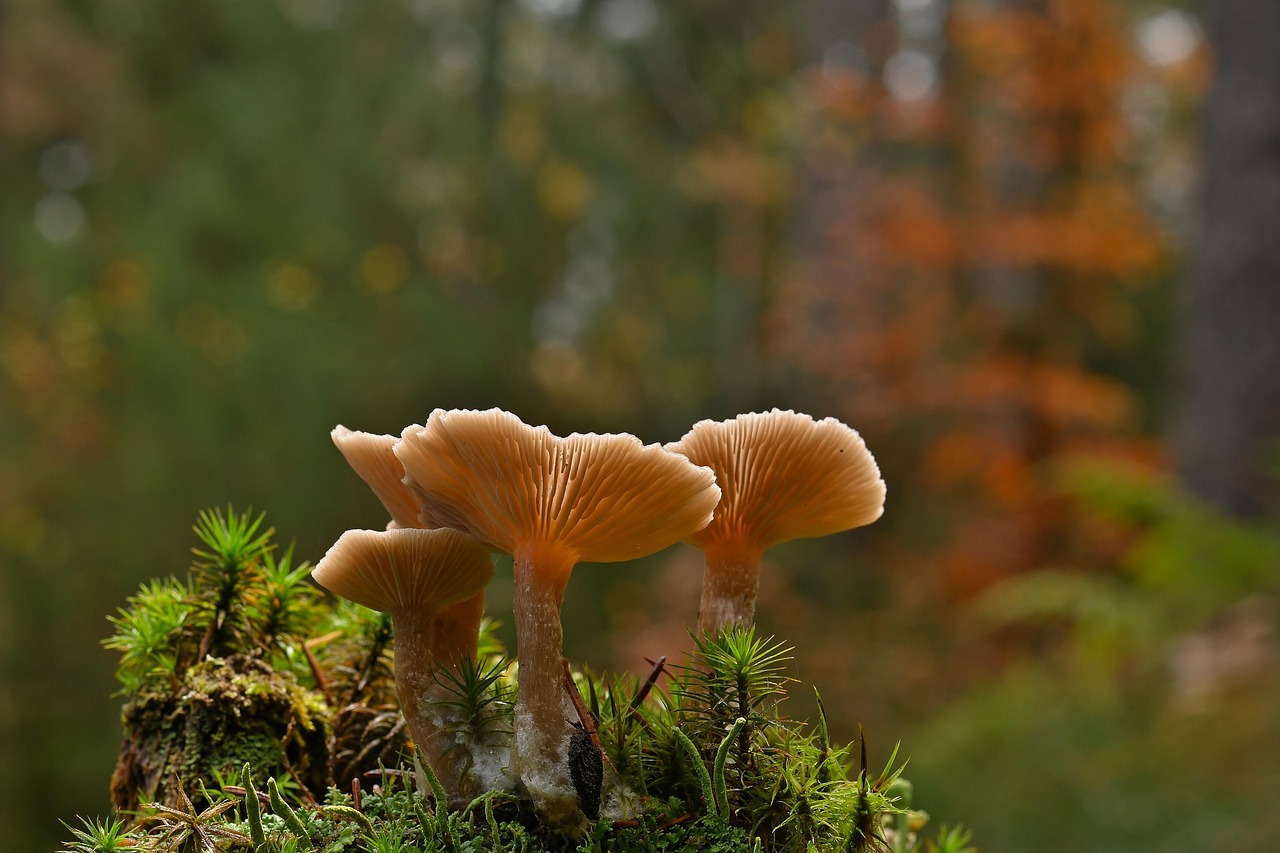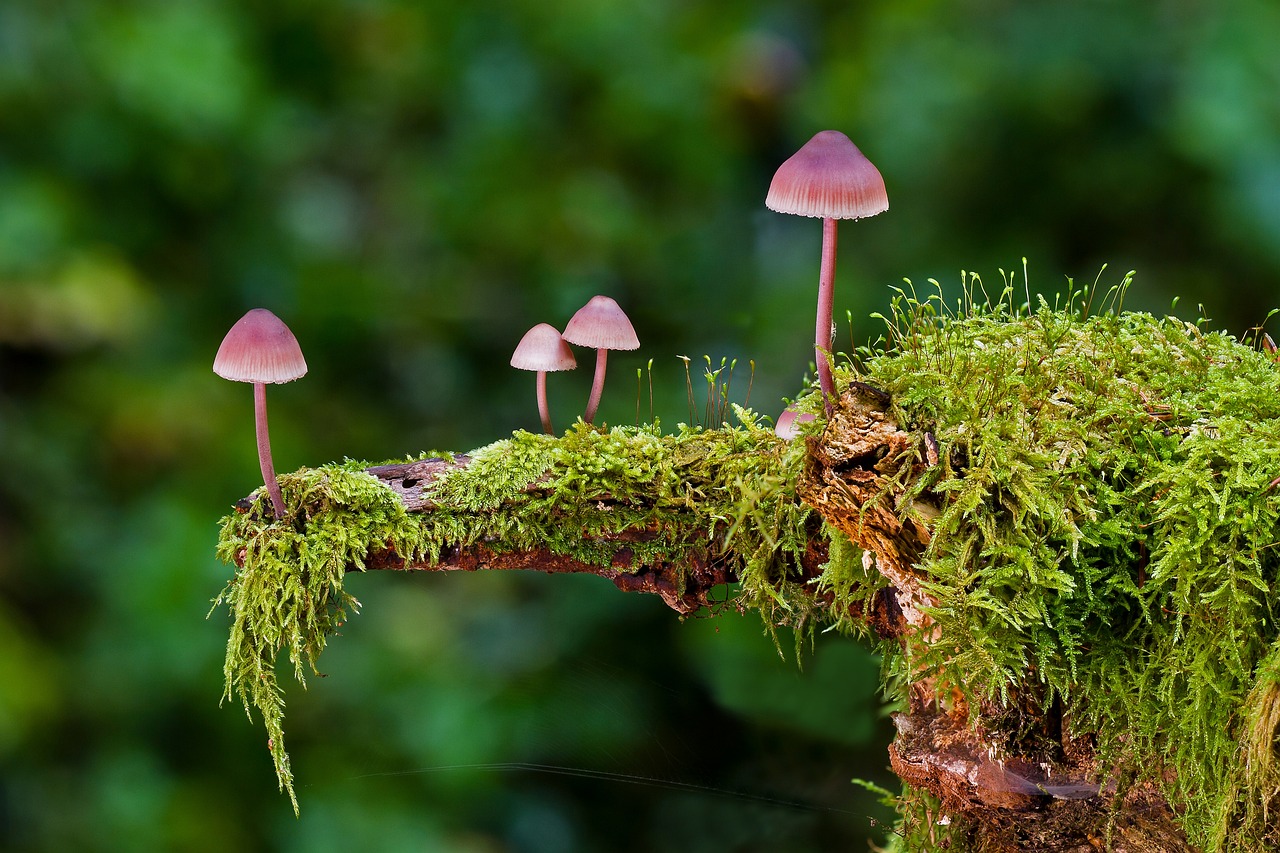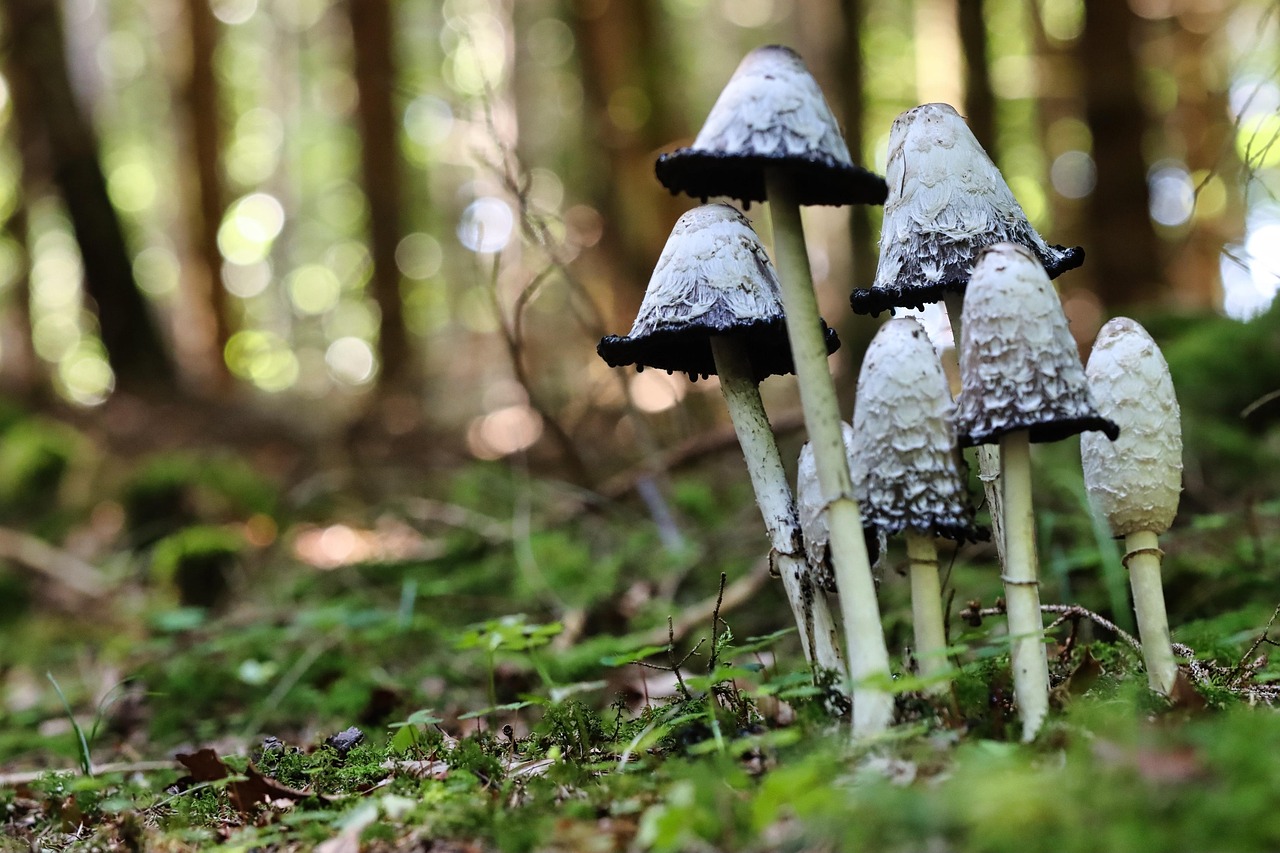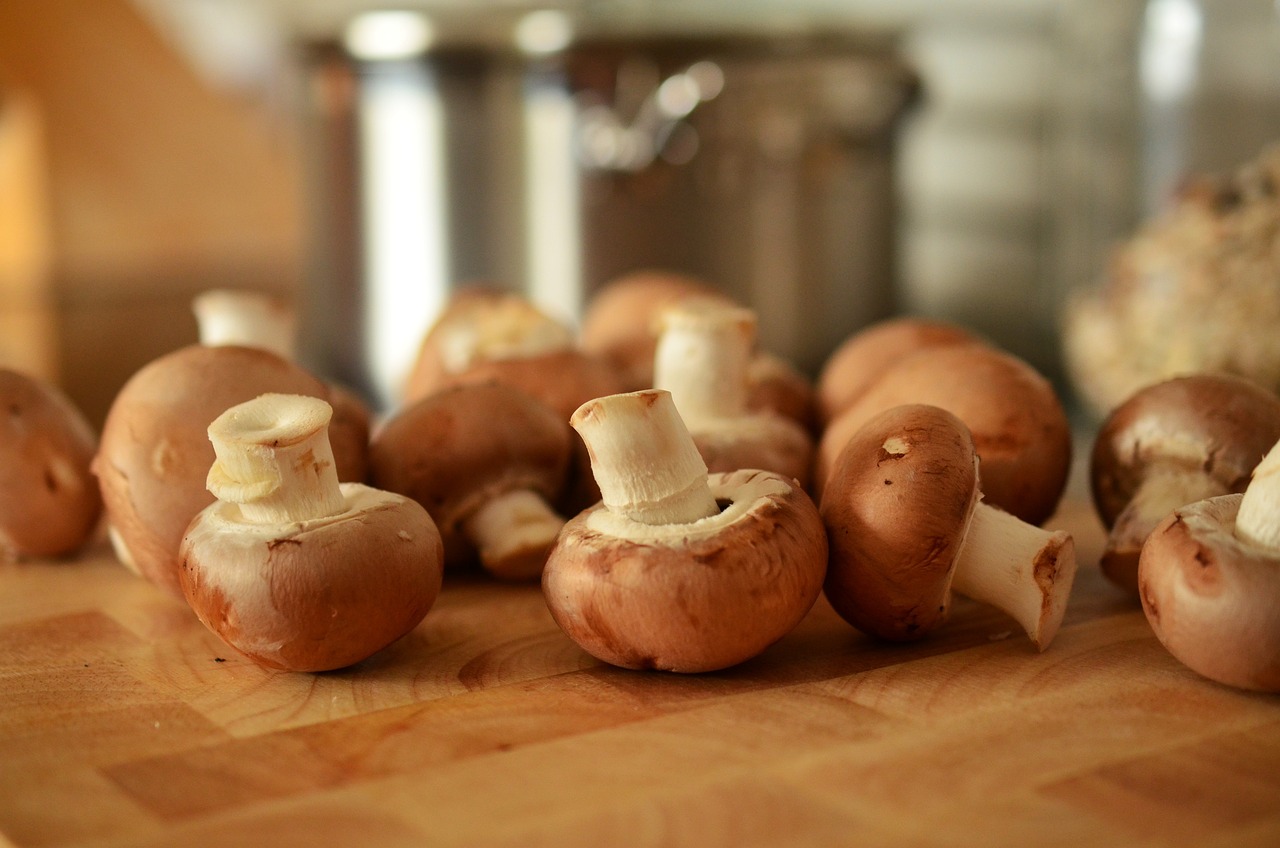Have you recently noticed mushrooms sprouting in your yard? While they may seem like an unwelcome surprise, these fungi can provide valuable insights into the health of your soil and garden ecosystem. Understanding what causes these mushrooms to appear can not only help you manage them but also enhance your gardening practices.
Mushrooms are the fruiting bodies of fungi. They thrive in environments where conditions are favorable, such as moisture, organic matter, and appropriate temperatures. When these conditions are met, mushrooms can emerge suddenly and in significant numbers. This phenomenon often raises questions among homeowners and gardeners alike. Are they harmful? Do they indicate a problem within your soil? Let’s explore the reasons behind their growth and what it means for your yard.

Fungi play a critical role in the ecosystem. They help decompose organic matter, recycle nutrients, and contribute to soil health. However, not all mushrooms are safe. Some can be toxic to humans and pets. Therefore, it is essential to identify the types of mushrooms that appear in your yard.
Common Causes of Yard Mushrooms
There are several factors that contribute to the sudden appearance of mushrooms in your yard. Here are some common causes:
- Moisture: Fungi thrive in damp environments. Heavy rainfall or overwatering can create ideal conditions for mushroom growth.
- Decaying Organic Matter: Mushrooms often grow in areas rich in decomposing material, such as mulch, fallen leaves, or wood chips.
- Soil Nutrients: Nutrient-rich soils can promote the growth of fungi. High nitrogen levels, often from fertilizers or animal waste, can also attract mushrooms.
- Shade: Areas with little sunlight tend to retain moisture longer, making them more conducive to mushroom growth.
Identifying the type of mushroom can also help you understand its implications. Some common mushrooms found in yards include:
| Mushroom Type | Description | Toxicity |
|---|---|---|
| Common Mushroom | White to light brown cap, commonly found in gardens. | Edible |
| Fly Agaric | Bright red with white spots; iconic but dangerous. | Toxic |
| Shiitake | Brown cap, known for culinary uses. | Edible |
| Death Cap | Greenish cap; highly toxic and can be fatal. | Highly Toxic |
The table above outlines some common types of mushrooms found in yards. It is crucial to exercise caution when interacting with any wild mushrooms. If you’re uncertain about their safety, it is best to consult an expert or avoid consumption altogether.
Apart from their aesthetic appeal, mushrooms can also signify underlying issues in your yard’s health. For instance, if you notice a persistent presence of mushrooms, it may indicate excessive moisture retention or an imbalance in soil nutrients. Addressing these issues can help improve the overall health of your garden.
In some cases, mushrooms may also signal a healthy ecosystem working effectively. The presence of beneficial fungi can contribute positively by enhancing soil structure and nutrient availability for plants. Understanding this dual nature of mushrooms is essential for any gardener aiming to cultivate a thriving outdoor space.
As we delve deeper into the topic of yard mushrooms, we will explore specific types of fungi that frequently appear and offer tips on managing their presence effectively.
Identifying Common Yard Mushrooms
Understanding the specific types of mushrooms that can appear in your yard is essential for proper management. Here are some common mushrooms you may encounter:
- Button Mushroom (Agaricus bisporus): Often found in gardens and lawns, these are the familiar white mushrooms used in cooking. They thrive in rich, organic soil.
- Chanterelle (Cantharellus cibarius): Known for their distinctive trumpet shape and golden color, these mushrooms are sought after for their culinary value. They typically grow in wooded areas and under specific trees.
- Porcini (Boletus edulis): These edible mushrooms have a thick stem and a brown cap. They prefer damp environments and are often found in forests.
- Honey Fungus (Armillaria): These can be problematic as they are parasitic fungi that attack trees and shrubs. They appear in clusters and have a yellow-brown color.
- Death Cap (Amanita phalloides): Highly toxic, this mushroom resembles edible varieties. Caution is essential, as it can be fatal if ingested.
Factors Influencing Mushroom Growth
The growth of mushrooms is influenced by various environmental factors. Recognizing these can help you understand why they may suddenly appear in your yard.
- Season: Mushrooms often appear in the fall and spring when temperatures are moderate, and moisture levels are high.
- Soil Composition: The presence of organic matter, such as decomposing leaves or wood, provides nutrients that encourage mushroom growth.
- Shade and Sunlight: Areas with limited sunlight tend to retain moisture longer, creating a favorable environment for fungi.
- Temperature: Warm temperatures can accelerate mushroom growth, particularly during humid conditions.
The Role of Fungi in Soil Health

Mushrooms are just the visible part of a much larger fungal network known as mycelium. This underground network plays a critical role in maintaining soil health. Here are some benefits fungi provide:
- Nutrient Recycling: Fungi break down complex organic matter, making nutrients available to plants. This process is essential for sustaining plant growth.
- Soil Structure Improvement: Fungal networks help bind soil particles together, improving soil structure and aeration.
- Water Retention: Fungi can enhance the soil’s ability to retain moisture, which is vital during dry periods.
- Pest Resistance: Some fungi form symbiotic relationships with plants that can help them resist pests and diseases.
Managing Unwanted Mushrooms
If you wish to manage or reduce the presence of mushrooms in your yard, consider implementing the following strategies:
- Reduce Moisture: Ensure proper drainage in your garden to minimize excess moisture. Avoid overwatering your plants.
- Remove Organic Debris: Regularly clean up fallen leaves, wood chips, and other organic matter where mushrooms thrive.
- Increase Sunlight: Trim back overhanging branches to allow more sunlight into shaded areas, reducing moisture levels.
- Aerate the Soil: Aerating your lawn can improve drainage and discourage mushroom growth.
By understanding the types of mushrooms that may appear in your yard and their implications for soil health, you can make informed decisions about managing them effectively. The next section will delve deeper into the benefits of certain mushrooms and how they can enhance your garden’s ecosystem.

Beneficial Mushrooms in Your Garden

While many homeowners view mushrooms as nuisances, certain species can offer remarkable benefits to your garden. Recognizing these beneficial mushrooms can help you appreciate their role in the ecosystem and even utilize them for your gardening practices.
Types of Beneficial Mushrooms
Here are some common mushrooms that can provide positive effects in your yard:
- Mycorrhizal Fungi: This group forms symbiotic relationships with plant roots, enhancing nutrient absorption. They improve the uptake of phosphorus, nitrogen, and other essential nutrients, leading to healthier plants.
- Shiitake Mushrooms (Lentinula edodes): Known for their culinary uses, shiitake mushrooms can also help break down wood and organic matter, enriching the soil.
- Maitake Mushrooms (Grifola frondosa): These mushrooms grow at the base of trees and contribute to soil health by decomposing organic material.
- Reishi Mushrooms (Ganoderma lucidum): While primarily recognized for their medicinal properties, reishi mushrooms can help improve soil structure and health when present in gardens.
How Beneficial Mushrooms Enhance Soil Health
Understanding the specific ways beneficial mushrooms contribute to soil health is crucial for gardeners. Here are several advantages:
- Nutrient Cycling: Beneficial fungi decompose organic matter, recycling nutrients back into the soil. This process supports plant growth and enhances soil fertility.
- Pest Management: Some fungi produce natural compounds that can deter pests. This biological control can reduce the need for chemical pesticides.
- Soil Structure Improvement: Fungi help create a stable soil structure by binding soil particles together. This leads to better aeration and drainage.
- Water Retention: The presence of fungi can increase the soil’s ability to retain moisture, making it easier for plants to survive during dry spells.
Cultivating Edible Mushrooms in Your Yard
If you are interested in harnessing the benefits of mushrooms while also enjoying their culinary delights, consider cultivating edible mushrooms in your yard. Here are some steps to get started:
- Select the Right Species: Choose mushroom varieties that are suitable for your climate and soil conditions. Common choices include shiitake, oyster, and lion’s mane mushrooms.
- Create an Appropriate Habitat: Most edible mushrooms require specific substrates for growth. For instance, shiitake mushrooms thrive on hardwood logs, while oyster mushrooms can grow on straw or sawdust.
- Inoculation: Introduce mushroom spores or mycelium into your chosen substrate. This process is known as inoculation and is crucial for successful growth.
- Maintain Conditions: Ensure that the growing environment is suitable. Most mushrooms prefer shaded, moist areas with good airflow. Monitor humidity levels and keep the substrate damp but not waterlogged.
Harvesting and Using Edible Mushrooms
Once your mushrooms have grown, harvesting them correctly is important to ensure quality and flavor. Follow these tips:
- Timing: Harvest when the caps are fully opened but before they start to release spores. This is usually when they are at their peak flavor.
- Gentle Removal: Twist or cut the mushroom at the base to avoid damaging the mycelium, which can allow for future growth.
- Storage: Store harvested mushrooms in a paper bag in the refrigerator. Avoid plastic bags as they can trap moisture and lead to spoilage.
Cultivating edible mushrooms not only adds diversity to your garden but also provides fresh produce that can enhance your meals. In the following section, we will explore safety considerations regarding yard mushrooms and how to identify potentially harmful species.
Safety Considerations Regarding Yard Mushrooms
While mushrooms can provide various benefits, it is essential to approach them with caution. Many mushrooms can be toxic or harmful, and distinguishing between edible and poisonous varieties is crucial. Here are some safety considerations to keep in mind:
- Identification Skills: Learning to identify different mushroom species is vital. Use reliable field guides or consult with local mycological societies for assistance in identifying mushrooms in your yard.
- Consult Experts: If you are unsure about the safety of a mushroom, consult a local expert or mycologist. Many communities offer workshops on mushroom identification.
- Avoid Wild Mushrooms: As a general rule, avoid consuming wild mushrooms unless you are 100% certain of their identity and edibility.
- Educate Others: If you have children or pets, educate them about the dangers of touching or consuming wild mushrooms. Awareness can prevent accidental poisoning.
Common Toxic Mushrooms to Watch For
Being aware of common toxic mushrooms can help you stay vigilant. Here are a few harmful varieties to look out for:
- Death Cap (Amanita phalloides): This mushroom is responsible for the majority of fatal mushroom poisonings worldwide. It resembles edible mushrooms, making it particularly dangerous.
- Destroying Angel (Amanita virosa): Another highly toxic mushroom, it has a similar appearance to some edible varieties and can be deadly if ingested.
- Fly Agaric (Amanita muscaria): Recognizable by its bright red cap with white spots, this mushroom is toxic and can cause severe gastrointestinal distress.
- Jack O’Lantern (Omphalotus illudens): This mushroom glows in the dark and can cause nausea and vomiting if consumed.
Final Thoughts
Mushrooms can be both fascinating and beneficial components of your garden ecosystem. Understanding their role, identifying the various species, and recognizing the potential risks associated with wild mushrooms is essential for any gardener. By learning about the types of mushrooms that may appear in your yard and their implications for soil health, you can make informed decisions about how to manage them effectively.
From improving soil structure to providing fresh produce, beneficial mushrooms can enhance your gardening experience. However, it is crucial to balance this with safety awareness. Always exercise caution when dealing with wild mushrooms, as some can pose serious health risks.
Whether you choose to embrace the presence of mushrooms in your yard or cultivate edible varieties, knowledge is your best tool. With the right information, you can turn what might initially seem like a nuisance into an opportunity for growth and enrichment in your garden.
